Long
Island’s early wireless
history has been largely ignored by local historians.
Probably no other area in the America could equal Long Island for its
density
of early radio stations. Its proximity to
New
York City, the financial capital of the world, and to its harbor
destined
Long Island to become the locus of transatlantic radio communications
and
ship-to-shore wireless service for Atlantic shipping.
For over a half a century before the advent of satellite
communications the
overwhelming majority of transatlantic radio communications with the
United States funneled through Long Island facilities.
The first permanent wireless station in the US
was built at Siasconset on Nantucket Island and placed in operation
August
12, 1901. The Marconi station at South Wellfleet in Cape Cod was
originally
erected in 1901, but its antennas blew down before it was
operational.
Cape Cod didn't get on the air until January of 1903.
The purpose of early wireless stations
was to relay
traffic from ship to shore for profit. The
Marconi
Company along with others set up a closed system. They
would
supply the equipment and operators. The
equipment was installed aboard ship and at land stations by Marconi
Company
employees. Radio contacts were always between Marconi owned stations.
Other Companies did the same thing. The
thought
of using the system for distress wasn’t even considered.
The first recorded use of the system for distress was off Nantucket
Island
on January 23, 1909. Marconi had a station
located
there at Siasconset on the island of Nantucket to relay messages from
ships
coming from Europe on the New York and Boston.
The Royal Mail ship REPUBLIC was
outbound with
well-to-do passengers on their way to the Mediterranean area for a fun
filled
vacation trip. Off Nantucket the ship was rammed in the fog by the
FLORIDA,
a ship loaded with immigrants from Italy headed for New York City. The Marconi operator, Jack Binns aboard the
REPUBLIC
contacted Nantucket with the news. By this
time,
ships were beginning to become equipped with wireless.
As the word of the disaster spread, many ships
headed
for the area to be of assistance including two US Revenue Cutters.
Passengers were removed from both ships
without
incident and the REPUBLIC eventually sank. This
was
shortly before the TITANIC incident. Wireless
became
the instrument for rescuing people and ships that were involved in
disasters at sea. The Wireless Companies
became
reluctant participants in assisting in distress situations. The law of the sea at this time was that if
you assisted
a distressed vessel in any way, the ship’s company could collect
salvage
rights. This fact made captains reluctant
to
ask for help.
Many
Companies tried to get into the maritime message business.
Long Island, sticking out into the ocean was an
ideal
place to install the wireless gear, which only had a range of a few
hundred
miles in the beginning.
Radio’s infancy saw Long Island serve as home of Marconi’s second and
third
permanent stations in the United States, those at Sagaponack (Long
Island’s
first) and Babylon (Long Island’s second) opening in 1902, followed by
Sea
Gate in 1906. The Sagaponack and Babylon stations served also as
schools
for Marconi operators. The stations at
Sagaponack
and Sea Gate were often cited for facilitating assistance to vessels in
distress. Both handled a heavy flow of
Titanic survivor messages.
|
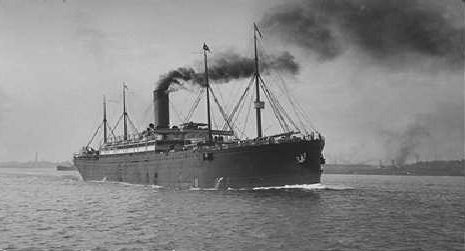
The Royal Mail Ship (RMS) REPUBLIC
|
The
Babylon station was located on the Jacobs property, which extended from
Fire Island Avenue to Sumpwams Creek. A school for training
telegraph operators in wireless telegraphy operation and procedures was
also established there. There were from four to six students in
the school all the time, and the course of instruction ran about three
weeks. They received free lodging in the Jacobs cottage on the
site. Upon successful completion of the course, they were
employed by the Marconi Company at a salary of from $60
to $100 a month.
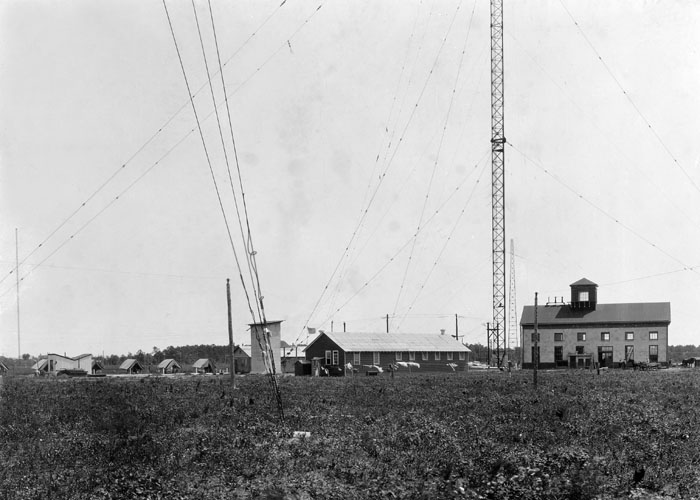 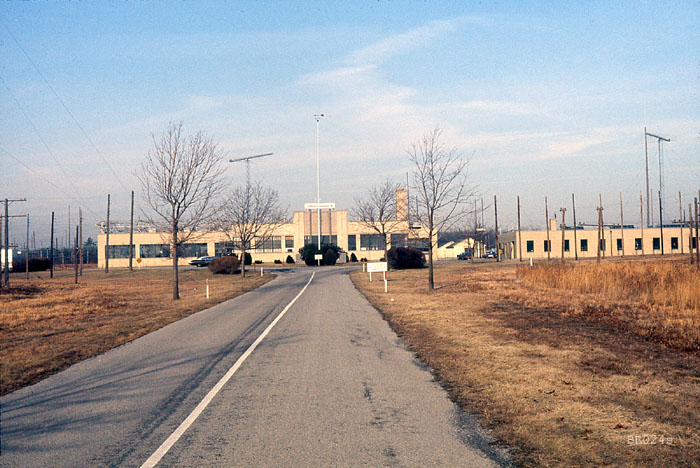
1918 shot of the
Sayville
Station while operated by the Navy
|
The small 12 by 14 foot station building,
abandoned
when the station closed in early 1907, was found and purchased in 1930
by
famed inventor Edwin H. Armstrong (super heterodyne, FM radio) and
presented
to RCA president David Sarnoff, and had it transported to RCA’s Radio
Central
site in Rocky Point. Today it is in the
possession
of the Rocky Point School district, which maintains it on the school
grounds. Once a year on Marconi day, local
radio amateurs
activate this site.
In 1912 the most powerful and advanced commercial wireless station in
the
United States, the first able to consistently span the Atlantic, was
erected
in West Sayville by the German firm, Telefunken. Its landmark 500-foot
antenna
tower was the tallest structure on Long Island. Through
its
sister station in Nauen, Germany, The Great Sayville Station, as it was
known, provided the most reliable radiogram and newspaper press service
to
Europe then available. It also provided ship-to-shore service for the
Hamburg-American
and North German Lloyd lines.
RCA’s “Radio Central,” opening in 1921 on a 10 square mile site at
Rocky
Point, was the world’s largest and most powerful transmitting station
of
its time. Its 2,000-acre receiving station
at
Riverhead bristled with antennas of the most advanced design. Its Long Island research laboratories employed
many
of the most brilliant minds in radio technology and for decades
literally
wrote the book on the subject. |
Beginning in 1927, Mackay Radio and Telegraph (later ITT World
Communications)
opened stations at Sayville, Southampton, Napeague, and Brentwood,
providing
international point-to-point communications and high seas ship-to-shore
service. At the height of submarine
warfare during WWII, Mackay
operators at Southampton reported receiving upwards of ten SOS calls a
day
from vessels on the Atlantic.
Mackay's Brentwood Station around 1984
|
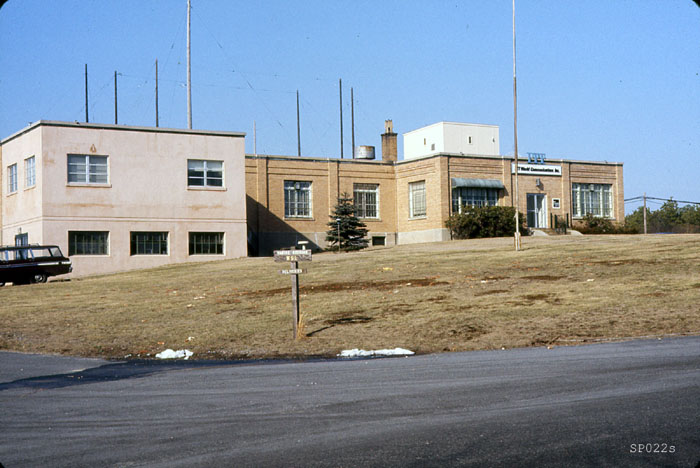
Mackay's
Southampton receiving Station. This shot was taken about
1982.
This Building housed both point-to-point and marine (WSL).
Operators
here keyed remote transmitters located at Amagansett (Napeague)
(MackayAm)
and later HF transmitters relocated from Amagansett to Brentwood.
|
Press Wireless, Inc. was formed in 1929 by a group of newspapers to
meet
demand for rapid transmission of news dispatches throughout the world. In 1930 it opened transmitting facilities on a
185-acre
site in Hicksville and a receiving station at Baldwin Harbor. In 1957 transmitting operations were relocated
to
a 500-acre site in Centereach, where it operated 47 high power
transmitters. Receiving was relocated to
Northville. In addition, PW provided
military radio links
throughout the world during WWII.
The voices of wartime news
correspondents
in Europe, such as Edward R. Morrow, received for AM broadcast were
received
through the Long Island receiving stations of RCA at Riverhead, Press
Wireless
at Baldwin or Mackay Radio at Southampton.

Marconi's Sagaponack
Station
|
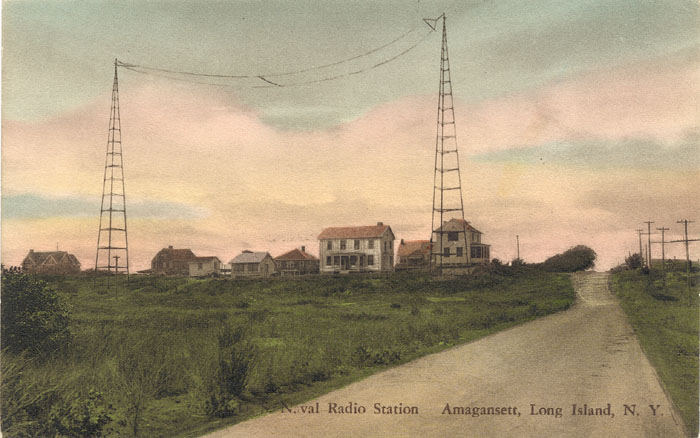
Naval Station at
Amagansett
|
There were also de Forest
stations
at Quogue, Manhattan Beach and Long Beach. The
US
Navy had stations at Amagansett, Montauk Point, Fire Island, and
Rockaway
Beach. Independent Wireless Telegraph
Company operated ship-to-shore stations at Babylon, East Hampton and
East Moriches,
as did Globe Wireless in Garden City.
A Voice of America
international
broadcast station was built on Long Island in 1941.
Operated by CBS from 1942 to 1963, the station shared the
1,100-acre
Brentwood site of Mackay Radio and Telegraph Co., beaming the outputs
of
its three 50,000 watt transmitters to Europe and South America using
extensive
arrays of directional antennas.
At Sayville, L.I. Telefunken of Germany set up a
large
station shortly before WW1. When we went
to war,
the U.S. Navy took over the station. The
Navy
early on recognized the value of wireless communication with their
ships.
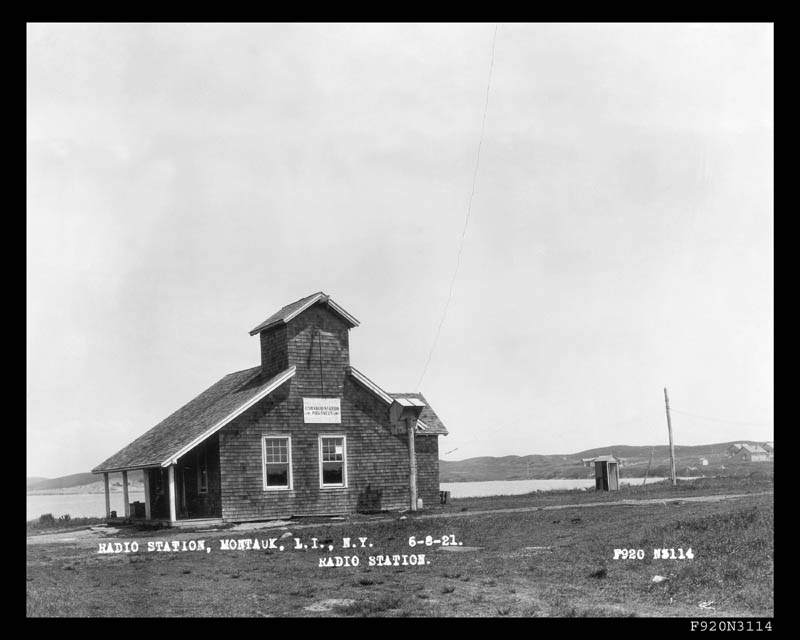
Navy's
second
station at Montauk about 1921. Probably located on the eastern
shore
of Fort Pond Bay. Ti appears the building is outfitted for a DF
antenna,
but another building (to the right) adds a bit of confusion.
|
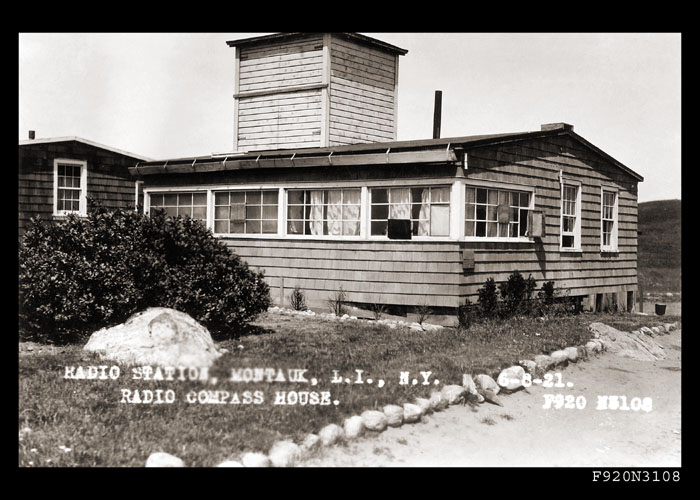
|
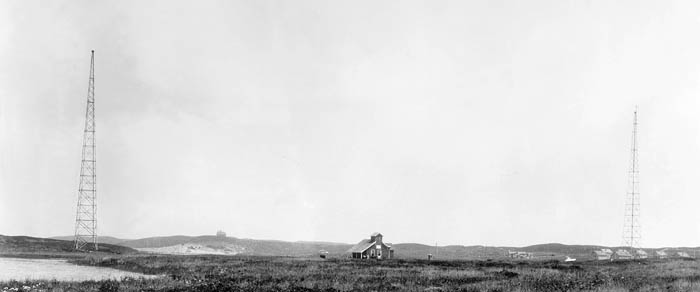 An overall shot of the Montauk
buildings abt 1921
An overall shot of the Montauk
buildings abt 1921
When Radio Corporation of America was formed
from
the Marconi Company, they soon built the largest transmitting and
receiving
stations in the world at Rocky Point and Riverhead, L.I.
These were tied by telephone line to their message center
at
Broad Street in Manhattan. Today nothing
remains
but some state signs proclaiming it the David Sarnoff outdoor
recreation
area and some large pieces of concrete deep in the Rocky Point woods.
Long Island’s rich history includes the
expansion
of wireless radio technology. This story is not generally depicted in
history
books. Hopefully this will help to bridge the gap.

Easthampton station later acquired by Independent Wireless Telegraph
|









